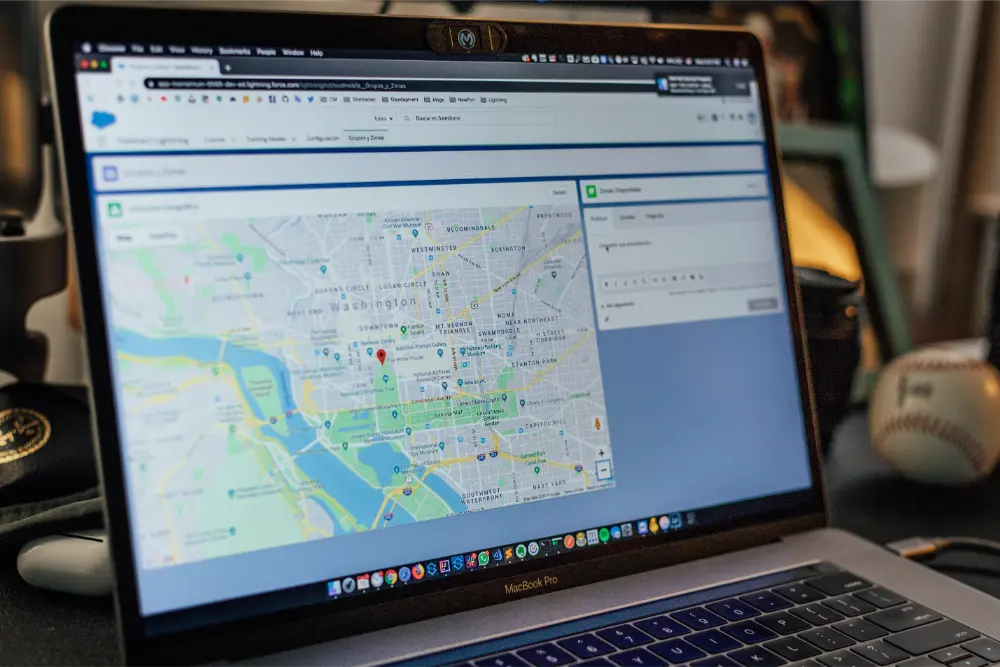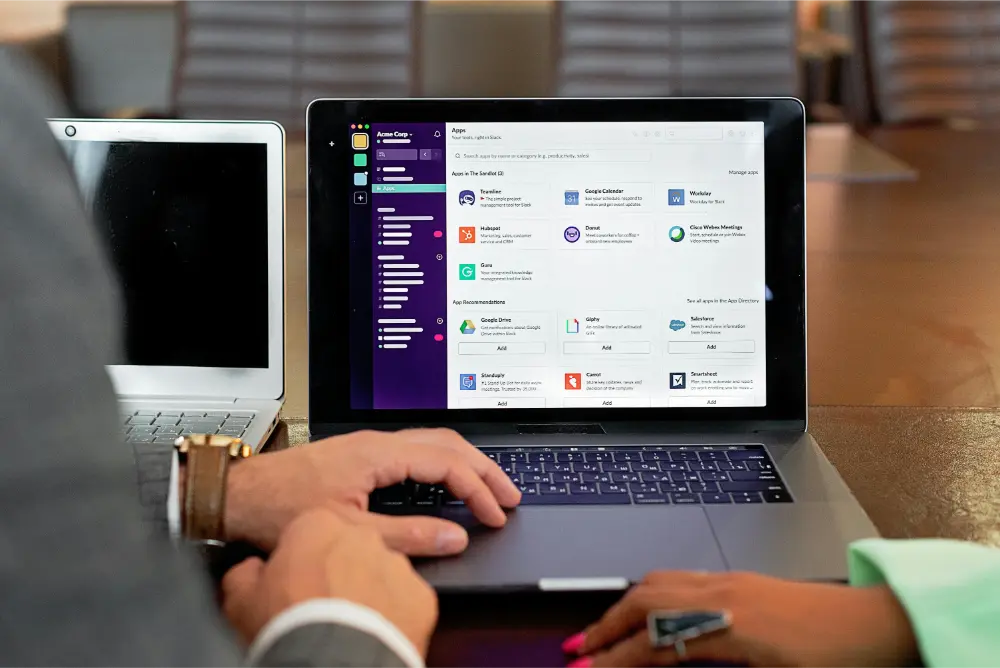Home |
Technology Solutions for Businesses
April 25, 2025


In today’s fast-paced environment, technology solutions have become essential for companies to stay competitive through greater efficiency and innovation. Investing in the right digital tools can make a real difference as these address workflow inefficiencies, automate repetitive tasks, add layers of protection, and enable more agile, responsive teams.
The key is not to view technology as another passing trend, but as a strategic asset that aligns digital capabilities with business goals to build a smarter, stronger organization.
What are technology solutions?


Photo by fauxels on Pexels
Technology solutions refer to the tools and systems designed to quickly address specific business needs or operational challenges, often in response to competitive market pressures. These solutions allow businesses of all sizes to achieve their desired outcomes through the effective use of digital technologies, with a well-curated tech stack that seamlessly supports their unique model. Over time, these have altered organizational structures by developing more solution-focused teams and encouraging integration across different departments, reducing the reliance on rigid hierarchies.
What are examples of technology solutions?
It’s essential to identify needs, challenges, and goals to find the right solution. Below are 5 technology solutions that drive productivity and growth.
Operational Solutions


Photo by Rodeo Project Management Software on Unsplash
For disorganized workflows or inefficient resource tracking, project management tools (e.g., ClickUp, Asana), inventory management systems, and Enterprise Resource Planning (ERP) (e.g., SAP S/4HANA, Oracle Fusion Cloud ERP) streamline operations and align them across departments.
Customer-centric Solutions


Photo by Yucel Moran on Unsplash
For poor customer engagement and fragmented data, Customer Relationship Management (CRM) systems (e.g., Salesforce) and e-commerce platforms (e.g., Amazon, Shopify) are used to improve customer interactions, relationships, and drive more sales.
Communication Solutions


Photo by Chris Montgomery on Unsplash
When communication gaps exist, such as in remote teams, platforms like Microsoft Teams and Zoom are used for real-time communication, and document management systems like Google Drive and Dropbox are used for secure file sharing and enhanced collaboration.
Data and Analytics Solutions


Photo by rc.xyz NFT gallery on Unsplash
When businesses lack insight into performance or trends, Business Intelligence (BI) tools and data analytics solutions analyze given information and uncover patterns related to consumer behavior, market trends, and organizational performance, enabling informed decisions and opening up new growth opportunities.
IT Infrastructure Solutions


For inflexible systems and poor scalability, solutions like cloud-based infrastructure (e.g., Microsoft), custom network design, and integrated cybersecurity measures are offered to enhance scalability, reduce downtime, and support a modern IT environment.
However, even with the best solutions in place, organizations still encounter technology challenges that can hinder operational efficiency. With this in mind, let’s explore a few common problems and targeted strategies to address them. As organizations continue to navigate the complexities of the digital landscape, it becomes increasingly clear that a solid IT infrastructure is not merely an option but a necessity.
What are some technology problems? How can we fix these?
Data Loss


Photo by Rubaitul Azad on Unsplash
Organizations often struggle with data loss caused by hardware failures or system crashes. This issue can be addressed by regularly backing up data to secure, cloud-based platforms like Dropbox, Google Drive, or AWS Backup. Not only do they store critical information safely, but they also offer features like automated backups and easy restoration processes. This is so that businesses can quickly recover lost data and minimize costly downtime.
Security Breaches


Cybersecurity threats remain a significant concern for many companies. By implementing advanced encryption protocols, multi-factor authentication, and continuous monitoring, businesses can significantly strengthen their defenses. These protective measures help safeguard sensitive data from unauthorized access and malicious activity, ensuring the confidentiality, integrity, and overall security of businesses.
To further enhance your organization’s cybersecurity situation, consider CloudConsole’s cybersecurity services. With a range of services such as comprehensive security audits, customized protection plans, incident response, and continuous monitoring, CloudConsole ensures that your digital assets remain protected and your data integrity is maintained.
Performance Issues


Slow application performance can hinder productivity and frustrate users, especially during peak usage times. By leveraging Content Delivery Networks (CDNs) to distribute content more efficiently and reduce load times for users across different devices, and performance monitoring tools such as Real User Monitoring (RUM) for proactive identification and resolution of such issues, businesses can ensure a fast, responsive experience for users and maintain operational efficiency in the workplace.
Integration Difficulties


Photo by Mikhail Nilov on Pexels
Many companies rely on a variety of software applications that need to work together seamlessly. However, incompatibility can lead to data silos, duplicated efforts, and slowing down of operations.
To overcome this, choose software solutions that easily connect with your other tools, like Zapier. Look for platforms that offer built-in integration features or strong API support, allowing for smooth data exchange across systems.
Inability to Scale


As businesses grow, their technology infrastructure may struggle to keep up with increasing demands, resulting in slow performance when handling larger volumes of data, transactions, and user activity. To mitigate this, companies should invest in cloud-based solutions with flexible scaling options, such as Google Cloud Platform, to ensure smooth performance during peak times and avoid over-provisioning, all while reducing costs.
Given these unique instances, CloudConsole can support businesses so they can thrive in the digital landscape by offering a wide range of custom IT solutions. From IT infrastructure and network design to 24/7 support, CloudConsole optimizes operations and drives sustainable, long-term growth. Backed by combined years of industry experience and a commitment to global standards, CloudConsole ensures that your business has the most suitable tools it needs for continued success.
Looking to upgrade your IT infrastructure? Get in touch with us today!
